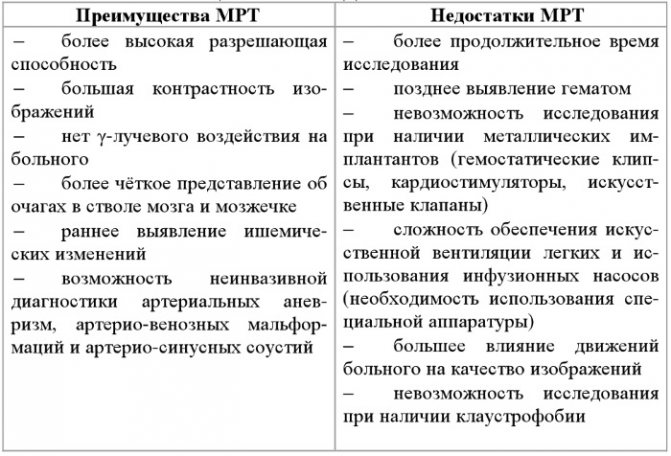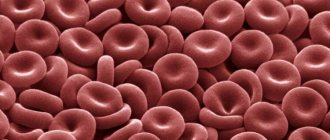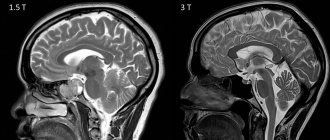A conventional MRI machine involves placing the patient in a scanning chamber, the size of which is limited. A magnetic field is created in this chamber, thanks to which it becomes possible to visualize the patient’s body organs.
However, in some cases, the use of this examination method becomes difficult or even impossible. For example, people suffering from claustrophobia experience severe stress in the enclosed space of a scanning chamber. Therefore, they cannot remain calm and still during the scan. It can also be difficult to perform an MRI examination on young children and people with mental disorders. But overweight people simply do not fit in the cell. For these groups of patients, it is reasonable to use open-type MRI equipment.
An open MRI machine does not have a “tube” or scanning chamber. The patient is placed in a separate room in which a magnetic field is created, allowing images to be taken. In this case, a medical worker or a relative of the patient may be with the patient. This creates a calmer, more stable environment for the patient and allows for a lengthy examination, often lasting 30 to 40 minutes.
When is an MRI of cerebral veins needed?
Do not confuse MRI of the arteries and veins of the brain with tomography of the brain. These are different studies, although they can be carried out in combination. In the first case, the anatomical and physiological characteristics of blood vessels and blood flow are assessed, and in the second - tissues and parts of the brain.
An MRI of the cerebral veins is worth doing if:
- Strokes (regardless of type, severity).
- Pathological vascular changes - malformations, aneurysms, stenoses, blood clots, atherosclerotic plaques, wall dissection.
- Traumatic brain injuries, hematomas, post-traumatic changes.
- Developmental defects.
- Brain tumors that compress a vessel, blocking the normal flow of blood.
- Vegetative-vascular dystonia.
Symptoms of these pathologies may include patient complaints of headache, dizziness, deterioration of mental abilities, decreased visual acuity, hearing, epilepsy, and others.
MRI of the veins and arteries of the brain is done in a special angiographic mode of operation of the tomographic apparatus. It allows you to evaluate the structure and anomalies of blood vessels and study blood flow data. This way you can understand the dynamics of cerebral blood supply and detect even small disturbances, which is important for early diagnosis.
Open system diagrams
In practice, several arrangement schemes are used: a natural type of water circulation, as well as with forced movement through pumping equipment.
| Fundamental differences | |
| Natural circulation | Forced circulation |
| – there is no mechanism for moving the coolant – there is an “accelerating” riser with a height of 330 cm or more – it is possible to add a boiler to the design – the maximum length of the contour is no more than 30 m. | – presence of pumping equipment in the organization diagram – the highest level of thermal output – uniform heating of all main branches – the presence of special shut-off valves in the circuit |
| The best option for small rooms with high ceilings | The best option for heating large areas when power is available |
The choice of schemes directly depends on the number of heated floors and the total area of the building
Of no small importance is the desired thermal regime, as well as the ability to ensure uninterrupted power supply to the system
Single-pipe
A single-pipe open system is characterized by the supply of coolant through a single line assembled from large-diameter pipes passing through all radiator batteries. Thanks to this feature, it is ensured:
- minimum amount of consumables;
- ease of self-installation;
- a small number of pipes in the living space.
The disadvantage of this scheme is that the radiators are not heated too uniformly. Batteries that are significantly removed from water heating equipment heat up and release heat less intensely.
Two-pipe
- uniform heating of all radiator batteries;
- individual adjustment of all radiators;
- durability and ease of use.
At the same time, the two-pipe open type system is more expensive and quite labor-intensive in terms of installation. The two communication branches must be positioned correctly, in accordance with the design documentation.
"Leningradka"
Modern heating equipment and new technologies have contributed to a significant improvement in Leningradka. Such a system has acquired improved controllability and increased functionality. The main differences of "Leningradka":
- free circulation of coolant;
- presence of a heating source;
- installation of radiators around the perimeter.
The pipeline can be horizontal or vertical, with an upper or lower connection type. The first option is considered to be more efficient in terms of heat output, and the bottom connection system is characterized by ease of installation.
How is an MRI examination of the brain performed?
It all starts with a consultation with a doctor, checking that there are no contraindications to magnetic resonance scanning. The main reasons that will force one to abandon the procedure and replace it with another technique are the following:
- Cardiovascular devices, neurostimulators, implants, stents, pumps, braces, vascular clips, other electronic devices that are not removable or have metal components.
- Pregnancy up to twelve weeks.
- Fear of confined spaces.
- Involuntary body movements (in some brain disorders) that make it difficult to remain still.
Before the examination, the patient removes all items of clothing and accessories containing metal components. If the doctor has prescribed the use of contrast agents, then a break of 3-4 hours after the last meal is necessary.
MR angiography of cerebral vessels will take from 30 to 50 minutes. The patient is placed lying on the tomograph table, the position of his body is fixed with special rollers for immobility. The doctor controls the process from the next office; communication with the patient is maintained through an intercom.
Contrast-enhanced tomography differs from conventional tomography in that before the diagnosis begins, the patient is intravenously injected with a drug that accumulates in tumor tissues and improves their visibility in the images. The substances do not pose a danger to humans and are completely eliminated from the body within a couple of days. The cost of MRI of cerebral veins will be slightly higher than simple MR angiography.
The patient will receive the result within an hour after the end of the procedure. This can be printed out the most informative images or recording on disk all the information received (the service is paid in addition to the price of MRI of the veins of the brain).
District heating
Water for central heating is heated in a central boiler room or thermal power plant. This is where the expansion of water with temperature changes is compensated. Next, hot water is pumped into the heating network by a circulation pump. Houses are connected to the heating network by two pipelines - direct and return. Having entered the house through a direct pipeline, the water is divided in two directions - for heating and for hot water supply.
- Open system. The water goes directly to the hot water taps and is discharged down the drain after use. An “open system” is simpler than a closed one, but in central boiler houses and thermal power plants it is necessary to perform additional water treatment - purification and air removal. For residents, this water is more expensive than tap water, and its quality is lower.
- Closed system. The water passes through the boiler, giving off heat to heat the tap water, connects with the heating return water and returns to the heating network. The heated tap water flows into the hot water taps. A closed system, due to the use of heat exchangers, is more complex than an open one, but tap water is not subject to additional processing, but is only heated.
Closed heating system
The terms “open system” or “closed system” do not apply to the entire central heating system of a city or town, but to each house individually. In one central heating system it is possible to connect houses with both an “open system” and a “closed system”. Gradually, open systems should be supplemented with heat exchangers and turn into closed systems.
MRI of cerebral veins in Moscow
LDC "Kutuzovsky" specializes in diagnostic services. With us you can inexpensively and quickly undergo both a complete examination of the main internal organs and specialized narrow studies. Urgent MRI of the veins of the brain is carried out seven days a week, together with a consultation with specialized doctors with the prescription of a course of treatment. A modern and accurate Philips tomograph with a power of 1.5 T will provide detailed, informative images even of such a difficult area for diagnosis as the head. The price for MRI of cerebral veins is from 3,600 rubles. You can sign up for the clinic by calling: +7(495) 021-01-76. We are waiting for you for a quality diagnosis.
Pipe location
Depending on the layout of the room, dimensions, different methods of arranging batteries and pipes are chosen.
One or two pipes – what to choose
Thermal systems involve preheating the liquid in the boiler, moving it, entering the heating radiators, and returning it through the return line to the boiler. The system can be using one or two highways.
In a single-pipe system, the liquid moves along one circuit with a large diameter, the heating radiators are located on the same line.
Advantages:
- Little material is required during installation.
- Easy installation.
- There are not many pipes in the room.
The batteries warm up unevenly; due to the remote location of the boiler, the heat transfer rates are lower.

For a private home
In the second case, a closed ring effect is formed, where heating devices are connected to a pipe for supplying and discharging (return) water.
Advantages:
- Heating radiators warm up evenly.
- Each battery has its own temperature - convenient if the rooms are different in size.
- Reliability.
Disadvantages: difficult installation, high cost.
Water supply methods
The direction of hot water supply depends on the location of the main line - from below or from above. In a one- or two-story house, the first option is chosen; the heated coolant rises through the central riser, circuits, and is supplied to the radiators.
Bottom distribution: the supply pipe is located near the return.
Battery connection methods
The location of the riser determines the type of wiring - vertical or horizontal.
When connected vertically, the batteries are connected to the central riser on each floor. Airing of the system is avoided. A multi-storey building receives efficient heating.
During horizontal wiring, batteries on one floor are connected to a common line.
Flaws
The large space in an open-type scanner has its disadvantages. The magnet size in scanners currently is about 1.2 T. The result is a decrease in image quality compared to closed-type MRI.

In addition to image quality, another factor to consider with this type of system is time. It takes approximately one and a half to two times longer to obtain a comparable image.
The open method of examination is comfortable, but does not provide the same level of detail as the closed one. For those patients who need to examine the liver, heart, lungs, the device is not suitable.









